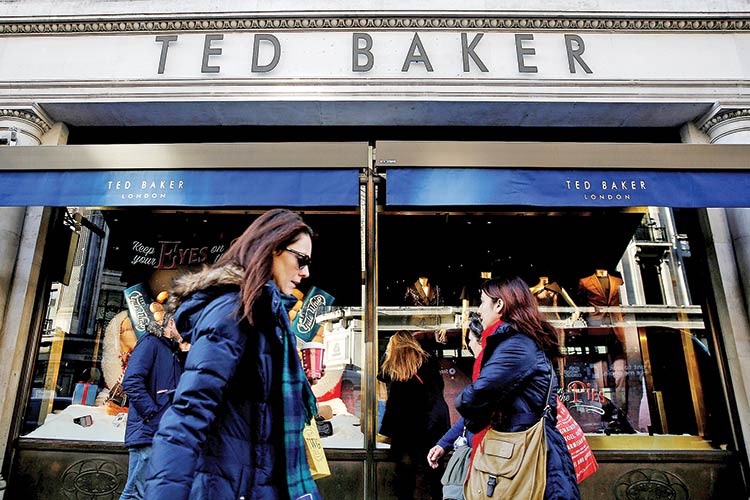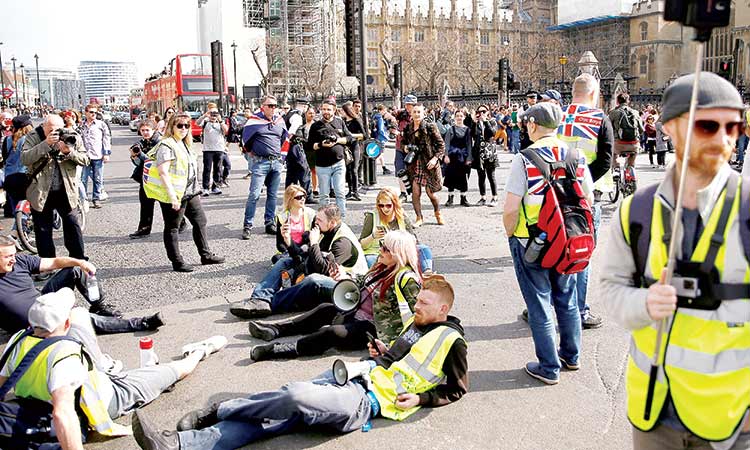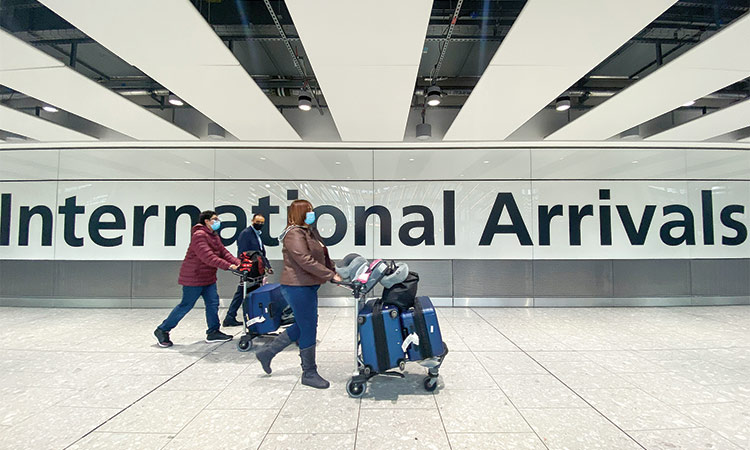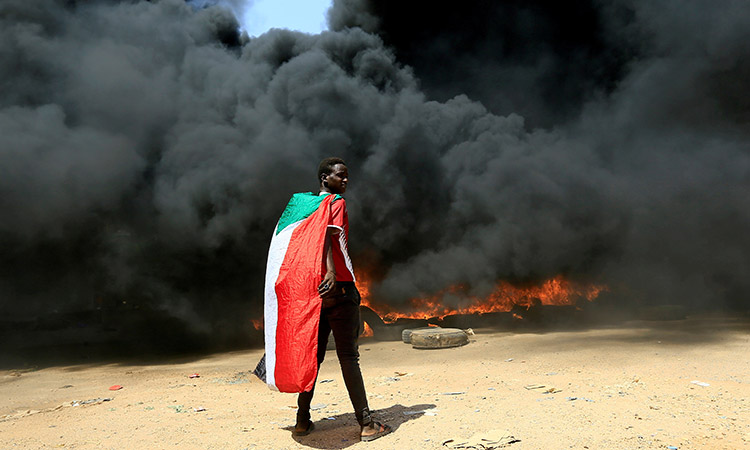Brands could cut a harmful picture

Shoppers outside a mall in London.
Aruna Kashyap, Tribune News Service
Last year, I huffed my way up a steep, narrow flight of stairs to meet a man who owned a small garment workshop in western India. The workshop —with about 20 male workers sewing —was hot and stuffy in the punishing Indian summer. But it looked like it was snowing.
The workers and tables were covered in fine cotton fiber-dust, which causes or exacerbates respiratory diseases, and they weren’t wearing masks. The buzzing of sewing machines was deafening.
The owner pointed out the window to what remained of a nearby building that had burned down, shrugging about the danger of fire hazards. The workers — all migrants from other parts of India — earned a daily wage and lived in the workshop to save on rent.
This is a snapshot of the underbelly of the global apparel industry. The owner said he produced branded clothes for global apparel companies. He proudly showed me the dresses and blouses his workers had sewn. Some were for big-name brands and retailers in the United States that do not disclose their supplier factories online.
Subcontracting to small workshops like this — which typically happens without the company’s permission — is a common practice in the apparel industry. At Human Rights Watch, we’ve found scores of these subcontractor factories in Cambodia and Bangladesh. Workers in these factories often endure far worse working conditions than those in larger factories.
I’ve spoken to sourcing experts who have worked for decades with numerous global brands. They say many apparel companies make poor estimates of consumer demands and timetables for orders, don’t monitor factories’ capacities, make last-minute design changes, use buying agents whose practices they don’t rigorously monitor, and set unrealistic low prices. Bad purchasing practices contribute to unauthorized subcontracting and other practices that put workers and the companies themselves at risk.
Brands and retailers could take numerous steps to curb these risks. Some do, some don’t. Consumers are starting to demand to see what the brands are doing. The more they hear from concerned consumers, the more likely the companies are to act.
A recent survey by the Consumer Goods Forum and Futerra across seven countries revealed that 55 per cent of consumers want more information on social, health, environment and safety issues in the manufacturing process. Here are three concrete demands consumers can make:
First, they should ask where clothing and footwear brands make their products. Such disclosure helps workers report abuses to brands when the brand’s own monitoring systems fail to detect them. Only a handful of US companies do this today. For more than a decade, Nike and Levi’s have been publishing the names, addresses, and other details of factories that produce their wares. Others who do so include New Balance, Disney, Gap, Fruit of the Loom, PVH, Under Armour, and VF Corp.
Second, consumers should ask brands and retailers to publish their policies on responsible purchasing. Demanding to see a policy will spur companies that don’t have one to create one.
Third, consumers should press brands and retailers to disclose how they are ranked on their purchasing practices by their suppliers. Better Buying, an industry monitoring group, allows suppliers to anonymously rank brands’ purchasing practices and publishes reports. Brands and retailers should cooperate with Better Buying and publish a summary of their scores.
Garment companies’ business practices have long been shrouded in secrecy. But consumers and investors have the power to insist on greater openness, and better treatment for the workers who make their clothes.







